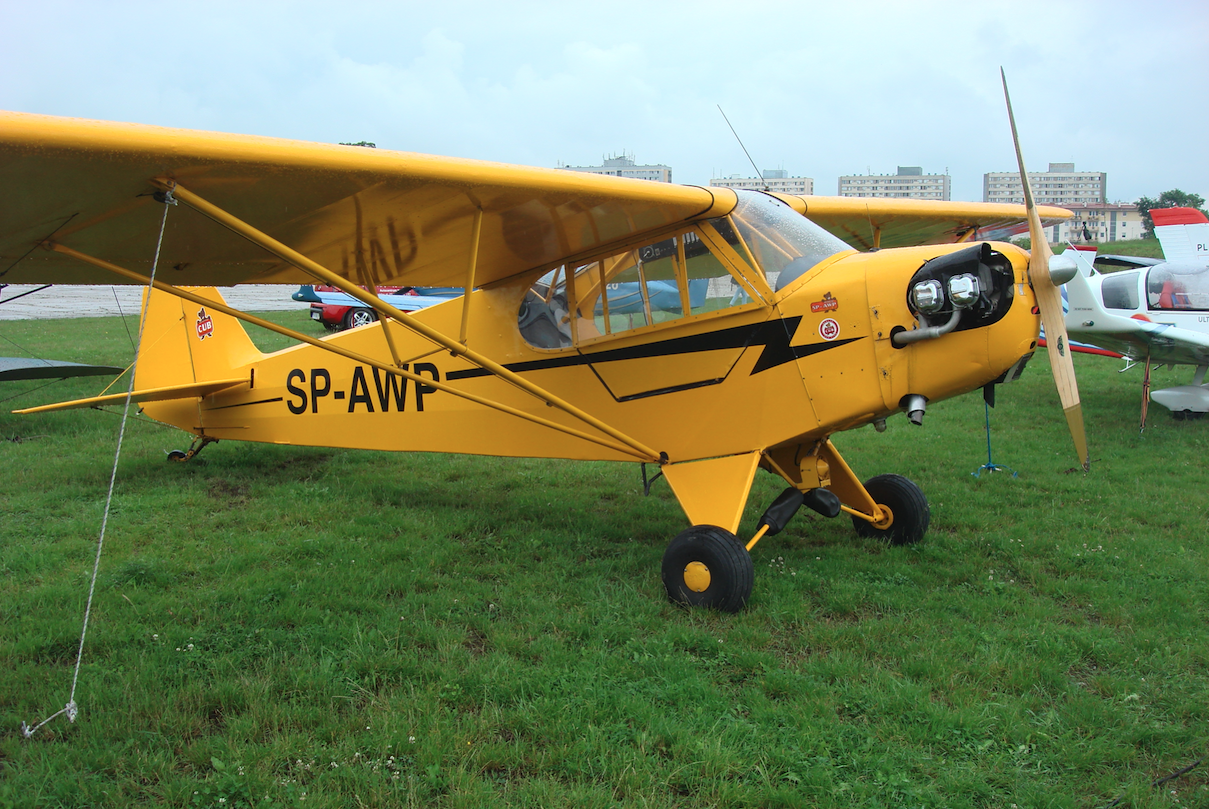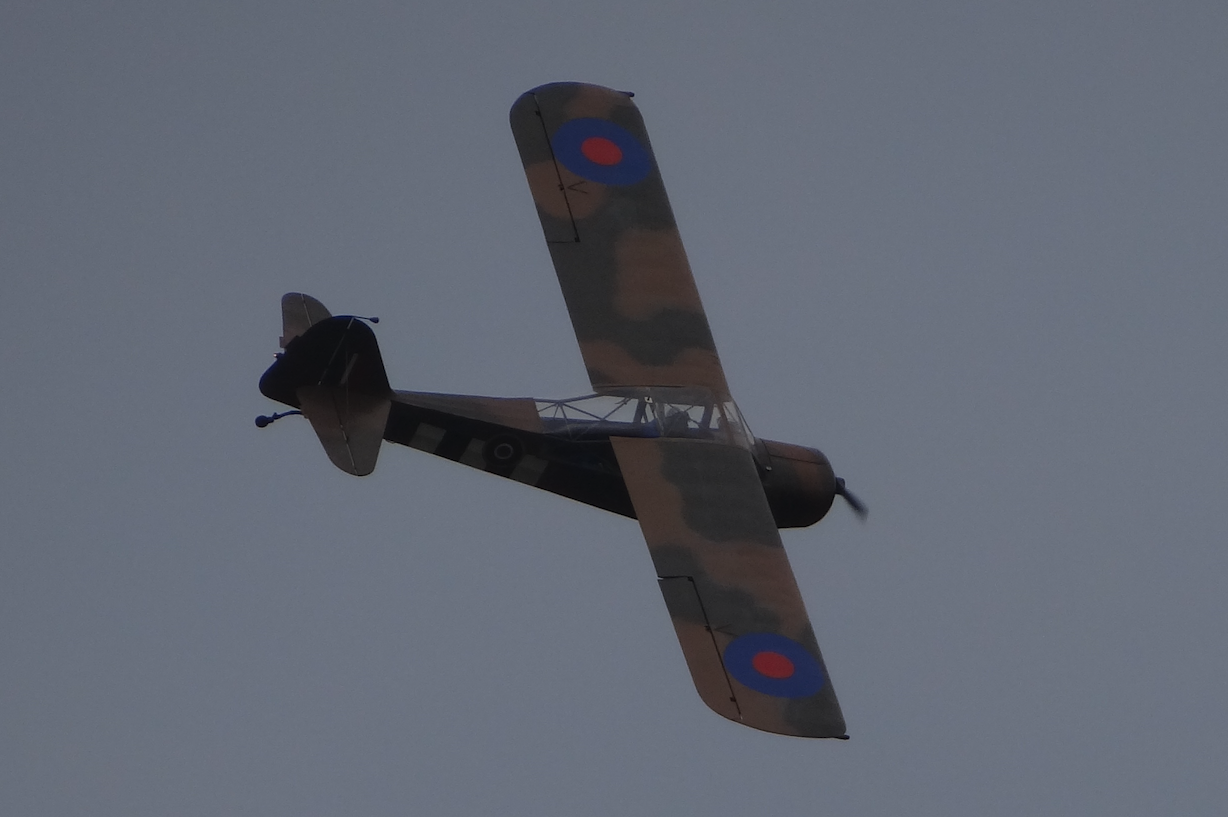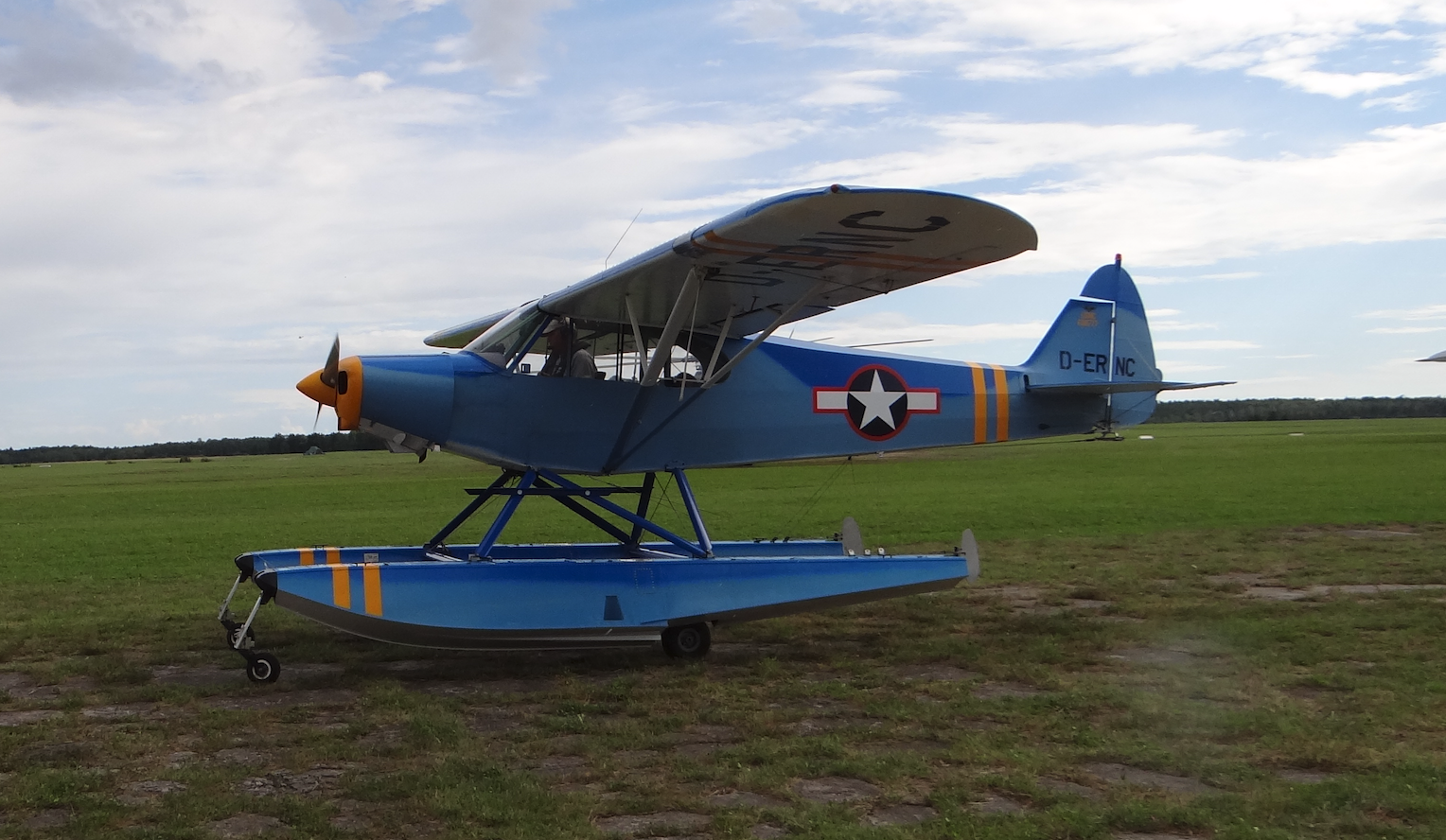History
The Piper J-3 / L-4 Cub is an American light aircraft built by Piper Aircraft in Bradford, Pennsylvania. The plane has a simple, light structure which provides it with good piloting properties at low take-off and landing speeds on a small landing field. The Piper J-3 / L-4 is the most widely produced model of Piper Aircraft, with nearly 20,000 produced in the United States alone. The simple design of the plane, affordable price and low operating costs make the comparison between the Piper J-3 / L-4 Cub and the Ford Model T car.


Piper L-4 Cub planes in Poland.
In 1946, after the Second World War, Poland (Ministry of Communications) bought 142 Piper L-4 Cub aircraft from surrender. These were versions of the Piper L-4 Cub A, B, H, J. The planes were not in the best condition, because they spent two years under the cloud in occupied Germany. The planes were maintenance-free and not covered with tarpaulins. Airplanes coupons for the proverbial cap of pears. The contract value was $ 550. The contract was concluded in December 1946.
The first Piper L-4 H Cub, factory number 43-30414, was delivered to Poland by air in November 1946 and registered on March 25, 1947 and received the registration SP-AFX.
The remaining planes were transported by rail to the airship hall in Słupsk. Airplanes in Poland have been renovated. Repairs were carried out at the Regional Aviation Workshops in Bydgoszcz, Gdańsk, Poznań, at the Experimental Aviation Workshops in Łódź and at the Gliding Institute in Bielsko Biała. The propellers were produced by the Experimental Aviation Workshop in Łódź. The first planes after the overhaul were flown in April 1947.
Airplanes were allowed to fly, but with restrictions, without the possibility of performing acrobatics on them. 127 aircraft received registration marks SP- ... The planes were directed to air clubs, sanitary aviation, state farms and aviation of the KBW and the Security Office. One plane was tested with Polish floats as a seaplane.
In 1950, at the Central Aviation Institute in Warsaw, engineer Tadeusz Chyliński made a project to convert the Piper Cub plane into a sanitary plane. 14 Piper L-4 Cub aircraft were reworked.
In 1952, 14 Piper L-4 Cubs were converted into agricultural planes in the LOT Polish Airlines workshops under the supervision of engineer Zygmunt Toczek. In place of the passenger seat, a 120 kg tank was installed. chemicals, poured from above through a sliding opening in the hull. Under the fuselage there was a spraying nozzle, into which a loose chemical agent was supplied, dispensed with a manual lever by the pilot. The planes were used to combat, among other things, the Colorado potato beetle. The planes were used only until 1953 because the plane had a low lifting capacity and the plane was poorly constructed.
In 1963, two Piper L-4 Cub planes were handed over to the Museum of Aviation and Astronautics in Krakow. One Piper L-4 Cub plane with the SP-AGB "Simolotek" registration was used by the editors of the "Skrzydlata Polska" magazine. For various reasons, the Piper L-4 Cub planes were withdrawn from aviation. The main reason was the American origin, i.e. from an imperialist country, as the US called the communists.
The renaissance of the Piper L-4 Cub design took place only in the 21st century, thanks to lovers of vintage aircraft. Several Piper L-4 Cubs have returned to flying, proving that the design is viable.
Piper L-4 Cub in version with floats.
In 1953, in Wrocław, engineers Jerzy Teisseyr and Stanisława Mosica designed a float chassis made of wood. At the Institute of Aviation in Warsaw, floats were mounted on the Piper L-4 H Cub SP-AFY aircraft, factory number 44-79889, with the Praga D engine. The first take-off and landing on the Vistula river was made on October 10, 1954. 66 flights were made. The plane was not approved. The floats were dismantled, and the plane continued to fly with the usual wheeled undercarriage.
However, several Piper L-4 Cubs with floats fly around the world. The floats are metal.


Written by Karol Placha Hetman
